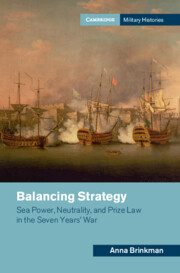- Penn Law's notice of Serena Mayeri's new book, Marital Privilege.
- BC Law's notice of Aziz Rana's receipt of the annual book prize of the Society for US Intellectual History for The Constitutional Bind.
- The Supreme Court Historical Society has a series of short videos, Breaking History, based on recent or forthcoming content in the Journal of Supreme Court History. Helen J. Knowles-Gardner discusses "Without a Little Help from Your Friends: The Supreme Court's Rejection of the American Jewish Congress Amicus Brief in NAACP v. Alabama ex rel Patterson (1958)" and Jonathan Lurie discusses his forthcoming review of Robert C. Post’s new contribution to the Oliver Wendell Holmes Devise History.
- Asheesh Kapur Siddique, University of Massachusetts-Amherst, on "the long history of governments attempting to restrict access to documents about their inner workings" (HNN).
- Katherine Gregory, Mississippi State University, on the threat funding cuts pose to political archives deposited in state universities (The Conversation).
- Over at Balkinization: a symposium has begun on Richard Primus's The Oldest Constitutional Question: Enumeration and Federal Power. Look out for contributions from Will Baude (Chicago), William Ewald (Penn), Jonathan Gienapp (Stanford), Abbe Gluck (Yale), Sandy Levinson (Texas), John Mikhail (Georgetown), and Christina Ponsa-Kraus (Columbia).
- "Tulane Law Students Explore the Origins of Maritime Law in Greece" (Tulane Law).
- "Quentin Skinner responds to a wide range of questions centred primarily on the arguments of his Liberty as Independence: The Making and Unmaking of a Political Ideal (2025) (GIH).
- Time's Made by History: Crushing Dissent is as American as Protest Itself by Shira Lurie. The Founders Knew Great Wealth Inequality Could Destroy Us by Daniel Mandell. Why American Revolutionaries Fought to Protect Habeas Corpus by Zara Anishanslin. Inherit the Wind and the Scopes Trial in Memory by Charlotte M. Canning.
- The Jacksonville University College of Law is hosting “250 Years of Independence: Fortifying America’s Commitment to Democracy for All," a traveling exhibit curated by the American Bar Association's Standing Committee on the Law Library of Congress (Florida Bar).
- At the American Prospect: Joseph A. McCartin (Georgetown University), "Requiem for the Wagner Act" (h/t: Bunk)
- ICYMI: The decline of postliberalism (Vox). Michael Kazin on the Scopes Trial at 100 (NYT). Dahlia Lithwick and Mark Joseph Stern ask, "Can Ketanji Brown Jackson’s Take on History Be a Corrective to Amy Coney Barrett’s?" (Slate). Gerard N. Magliocca on Robert Jackson's Youngstown concurrence as "the Greatest 'No Kings' Essay in History" (Slate). The Harvard law faculty's summer reads. John Yoo on Richard Epstein on the original understanding of the war powers (AEI).
Weekend Roundup is a weekly feature compiled by all the Legal History bloggers.






